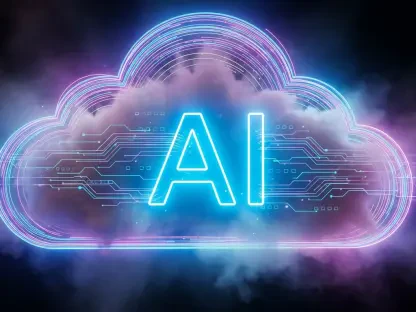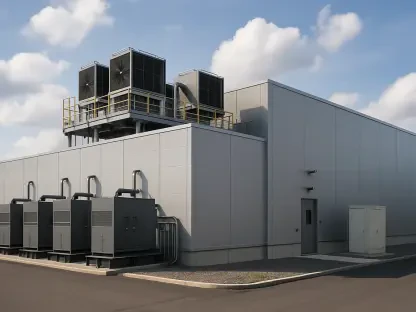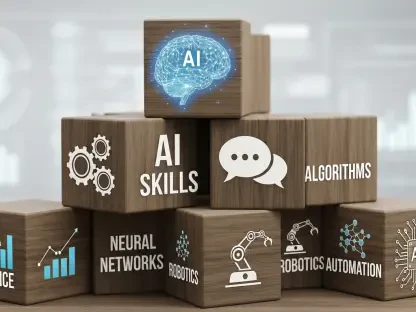The evolving landscape of network and infrastructure roles takes center stage as enterprises increasingly adopt new technologies like AI-driven operations, multicloud networking, zero trust network access (ZTNA), and SD-WAN. This article delves deep into recent research, hiring statistics, and certification trends affecting network professionals, infrastructure and operations (I&O) leaders, and data center teams.
Cybersecurity Skill Shortage
A persistent theme in the tech industry is the cybersecurity skills shortage, which remains a significant problem amid an increasingly threatening landscape. According to CyberSeek, the U.S. faces a shortfall of 265,000 cybersecurity professionals to meet current demands. Skills gaps, especially in areas like AI/ML, cloud computing security, and zero trust implementation, are widespread, impacting over 90% of organizations.
Gender Bias in IT
Gender bias in IT is another pressing issue. A recent survey showed that 71% of 327 female IT respondents reported working longer hours in hopes of advancing their careers. The survey reveals that women perceive men as moving up more quickly and feel workplaces aren’t doing enough to promote gender equality. Suggestions for improvement include providing mentorship opportunities, actively hiring diverse candidates, and ensuring pay equity.
Employment Data and Hiring Trends
Employment data from CompTIA presents a positive picture for the tech sector, with an increase of 118,000 positions in September and a reduction in the tech unemployment rate to 2.5%. Tech job postings also saw a growth spurt, particularly for roles like tech support specialists and database administrators. This growth is fueled by sectors such as cloud infrastructure and tech services.
Certification Trends
In terms of certifications, CompTIA has updated its Cloud+ certification to encompass DevOps and other cloud management skills, underscoring the importance of a diverse skill set in managing complex cloud and hybrid environments. Pearson’s new Generative AI Foundations certification aims to equip professionals with essential AI skills, reflecting the growing need for AI competencies in the job market.
Job Market Forecast
The forecast for network and system admin jobs presents a mixed picture. While roles for computer network architects and support specialists are expected to grow, the number of network and computer systems administrators is predicted to decline by 2.6% by 2033. However, the sector overall is anticipated to grow by 12.9%, indicating strong demand in other areas.
U.S. Labor Market and Economic Factors
The U.S. labor market shows signs of slowing, with IT job growth nearly flat in 2023 and a rising unemployment rate. Factors such as economic uncertainty, national elections, and geopolitical issues contribute to this stagnation. Employee education, particularly around AI tools, is emerging as a critical need, with 77% of employees and 73% of managers feeling inadequately trained in AI.
Global Initiatives and Industry Reports
On a global scale, programs like CompTIA’s partnership with Gebeya in Africa aim to bridge the digital skills gap by providing access to IT training and certifications. Meanwhile, a report from McKinsey & Company warns of a looming labor shortage in the semiconductor industry due to rapid expansion outpacing the available skilled workforce.
New Career Resources
CompTIA’s new career resources, like Career Explorer and Career+, aim to clarify IT roles and help individuals tailor their career paths, further addressing the skills gap. Additionally, regions like California, Washington state, and New York have been identified as the top-paying states for STEM jobs, showcasing the financial incentives for pursuing these careers.
Celebrating IT Professionals and Upskilling Initiatives
Celebrations like the 25th annual System Administrator Appreciation Day highlight the often-overlooked contributions of IT professionals. Certifications from organizations like NetBrain and collaborative programs like Skillsoft’s AI Skill Accelerator with Microsoft underscore ongoing efforts to upskill the workforce.
Conclusion
The evolving roles in network and infrastructure are rapidly changing as enterprises increasingly integrate advanced technologies like AI-driven operations, multicloud networking, zero trust network access (ZTNA), and SD-WAN. As organizations strive to stay competitive, the need for skilled network professionals, infrastructure, and operations (I&O) leaders, as well as data center teams, is more critical than ever. This article provides an in-depth analysis of recent research, highlighting hiring trends and the surge in demand for certifications that are shaping the future of these fields.
Specifically, AI-driven operations are transforming how networks are managed, allowing for automation and enhanced efficiency. Multicloud networking is becoming essential as businesses distribute resources across multiple cloud platforms to optimize performance and cost. ZTNA represents a paradigm shift in security, focusing on strict identity verification, while SD-WAN is revolutionizing how wide area networks operate, offering flexibility and cost savings. Understanding these trends is fundamental for professionals aiming to stay relevant and for organizations looking to bolster their technological capabilities.









